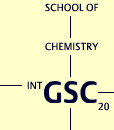 |


![]()
Name: Michael Seifert
Diploma / M.Sc degree: Westfälische Wilhelms-Universität Münster, Germany
(July 2006)
PhD Project: Transport Studies on Multidrug Resistance-Associated Protein (MRP)3 in Artificial Membrane Model Systems
Abstract of Research Project
A remarkable class of integral membrane proteins are the ATP-binding cassette (ABC)
transporters, which provide active transport of various substrates through cell membranes. Some members of this
protein family, like the subclass of MRPs, directly participate to the phenomenon of multi drug
resistance (MDR) by the extra-cellular directed transport of cytotoxic substances. The active export of
cytostatic drugs from tumor cells aggravates the medical treatment of cancer and is thus of special relevance for
human health care. In our working group, one focus lays on the characterization of transport proteins at the blood
brain barrier, where these efflux pumps avoid the diffusive influx of hydrophobic and amphiphilic substances through
the cerebral endothelium into the brain and thus offer a protecting function for this primarily crucial organ.
The importance of improvement by clarifying substrate specificities or molecular transport mechanisms of these interesting
peptides is obvious and accordingly the subject of numerous current transport studies in cell culture systems. The
problem here is the complexity of in vitro model systems. For instance, the endothelium cells used in our working group
contain different transport peptides, which all have similar substrate and inhibitor spectra with merely different affinities.
Thus the accurate characterization of the transport proteins by e. g. specific attribution of substrate transport to one
single peptide is only possible in model systems, where only one kind of transport protein at a time can be analyzed.
Therefore, in my thesis, isolated and purified ABC transport proteins MRP3, p-Glycoprotein and ABCG2 will be
reconstituted in solid supported artificial membrane systems for the first time. Afterwards, the ATP-arranged substrate
transport of the peptides shall be analyzed by appropriate spectroscopic methods.
The build-up of such a novel membrane model system shall be accomplished by directional attachment of the proteins on
solid gold or silicate surfaces and following membrane constitution. For the protein connection to the surface the specific
streptavidin-biotin conjugation shall be used.
In a novel approach the intrinsic observation of the substrate transport shall be performed by application of
fluorescence spectroscopic techniques like surface sensitive surface plasmon field-enhanced fluorescence
spectroscopy (SPFS) or by using the fluorescence resonance energie transfer (FRET)
phenomenon via confocal fluorescence microscopy.
The artificial membrane model systems will contribute to a better understanding of the multi drug resistance phenomenon.
Publications
M. Seifert, M. T. Rinke, H.-J. Galla
Characterization of Streptavidin Binding to Biotinylated, Binary Self-Assembled Thiol Monolayers - Influence of Component Ratio and Solvent
Langmuir 26(9) (2010), 6386-6393.
Michael Seifert
eMail: Michael Seifert